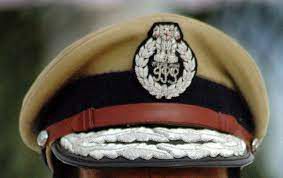cast in the caste system of Bihar
Just the term Bhagalpur conjures up a wide range of feelings and ideas. Bhagalpur has been a conundrum that defies description, from being the birthplace of education in the past to the cruel treatment of convicts held hostage in the 1970s, and from producing the world’s most renowned mulberry silk to the communal riots of 1989 that tore apart and burnt the social fabric.

Early in 1984, I received my first assignment as Superintendent of Police from this location. At the time, it was one of Bihar’s biggest districts. There are presently three divisions in the geographical region.
I had only served in the IPS for approximately four years, and since I was from another state and attended a missionary school, I understood very little about the complexities of Bihar’s social structure. I was unaware of the extent to which caste and religion were woven together to influence daily life. This was really a benefit in disguise since it gave me a more detached perspective on people and issues.
When I first faced the district police, I was completely overwhelmed by the magnitude of the hurdles I had to overcome in order to come out of the shadows and the fallout from the historic bindings. I was able to grasp the job at hand very quickly, and as a result, I had a whole new outlook on working in Bihar.
It seems that a well-known politician didn’t like what I did, or more significantly, felt that I wasn’t working in his best interests. Since I was not following his orders, he addressed the then-Chief Minister about moving me out of the region. Nevertheless, without any hard evidence to support his assertions, he resorted to the most flimsy excuse available in the state to disparage any public servant: caste.
That was the time if Bihar had ever had a “propah” bureaucratic chief executive. He made judgments only on the basis of merit. The politician attempted to persuade him that the SP belonged to caste “B” rather than caste “A,” as the CM had been informed, which would have been against his interests. Since the word “Verma” is multipurpose and is widely used by almost all castes in Bihar and beyond, my surname did not reveal anything about my caste.
To make fun of the local politician, the CM inquired about my caste from the Range DIG. The DIG, who is a devout Christian from Keralite culture and a former army soldier, reportedly asked the CM, “Hamein kya pata kis jaat ka hai?” That is plenty for me—Ladka kaam theek karta hai! For identical reasons, the District Magistrate was of little assistance, and none had the courage to approach me personally.
Even after being SP for over two years, I still consider it a compliment that no one in a state like Bihar is aware of my caste. It is a confirmation of my objectivity and fairness.
But how can an inquisitive politician be unaware of something as “important” as caste—and that too from a top police officer? I still find it hilarious that in their quest to find the truth, they began in the days when I had just joined as a young probationer, fresh out of the National Police Academy.
After making a few covert (and some not-so-discreet) inquiries, they discovered this gem. After a brief “search,” I learned that a senior DIG, whose last name clearly indicated that he was from caste “A,” had proposed marriage to my mother, who was then residing in Agra when I had just started working for the state. It was therefore reasonable to assume that because he belonged to caste “A,” I would as well. Issue resolved!
I learned from the show how deeply caste is embedded in society and how crucial it is to comprehend the subtleties of social balance.
Finally, but just as importantly, I discovered that if you look hard enough, careful study may provide the desired outcomes.







